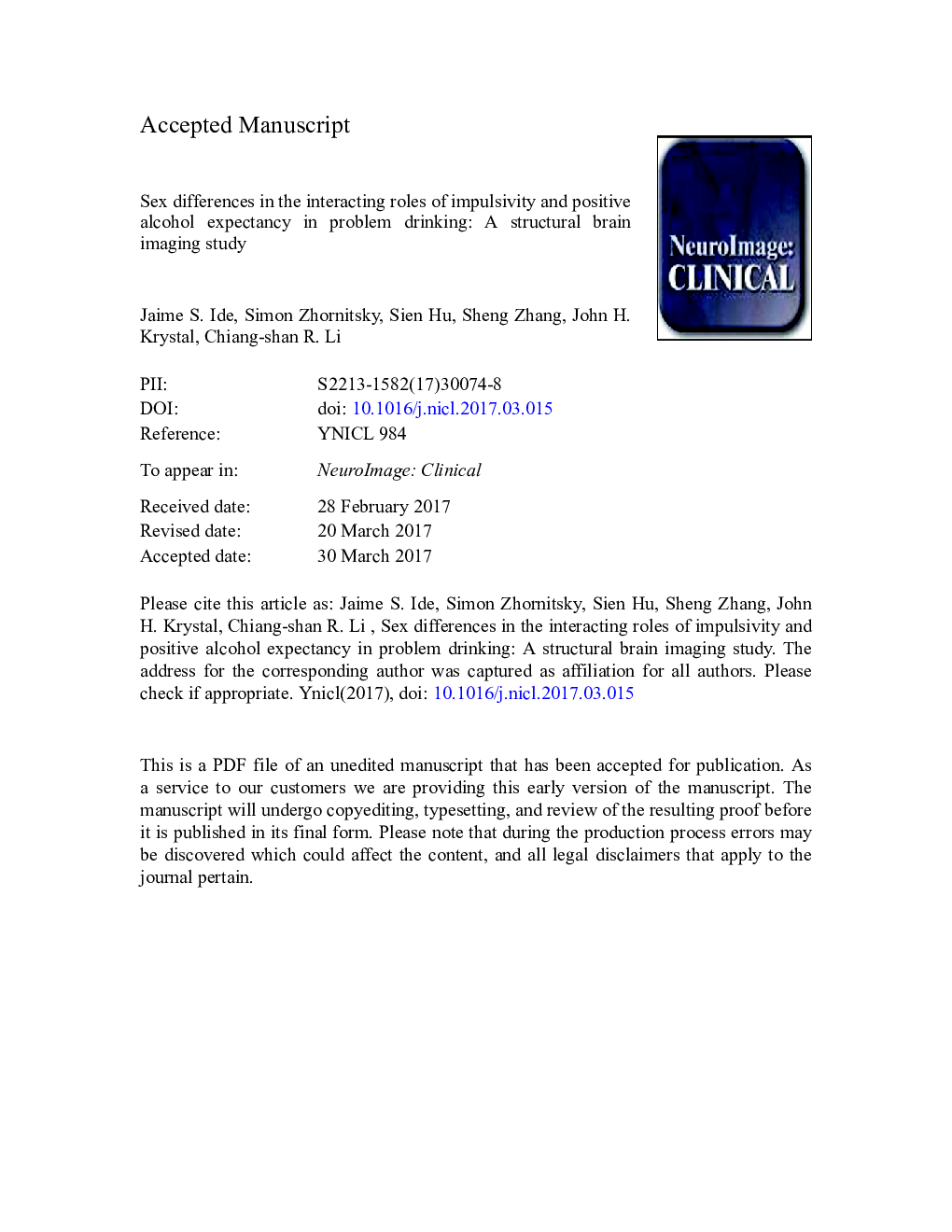| کد مقاله | کد نشریه | سال انتشار | مقاله انگلیسی | نسخه تمام متن |
|---|---|---|---|---|
| 8688818 | 1580953 | 2017 | 35 صفحه PDF | دانلود رایگان |
عنوان انگلیسی مقاله ISI
Sex differences in the interacting roles of impulsivity and positive alcohol expectancy in problem drinking: A structural brain imaging study
ترجمه فارسی عنوان
تفاوت جنسیتی در نقش های متقابل تحریک پذیری و انتظارات الکل مثبت در نوشیدن مشکل: یک مطالعه تصویربرداری ساختاری مغز
دانلود مقاله + سفارش ترجمه
دانلود مقاله ISI انگلیسی
رایگان برای ایرانیان
کلمات کلیدی
موضوعات مرتبط
علوم زیستی و بیوفناوری
علم عصب شناسی
روانپزشکی بیولوژیکی
چکیده انگلیسی
Alcohol expectancy and impulsivity are implicated in alcohol misuse. However, how these two risk factors interact to determine problem drinking and whether men and women differ in these risk processes remain unclear. In 158 social drinkers (86 women) assessed for Alcohol Use Disorder Identification Test (AUDIT), positive alcohol expectancy, and Barratt impulsivity, we examined sex differences in these risk processes. Further, with structural brain imaging, we examined the neural bases underlying the relationship between these risk factors and problem drinking. The results of general linear modeling showed that alcohol expectancy best predicted problem drinking in women, whereas in men as well as in the combined group alcohol expectancy and impulsivity interacted to best predict problem drinking. Alcohol expectancy was associated with decreased gray matter volume (GMV) of the right posterior insula in women and the interaction of alcohol expectancy and impulsivity was associated with decreased GMV of the left thalamus in women and men combined and in men alone, albeit less significantly. These risk factors mediated the correlation between GMV and problem drinking. Conversely, models where GMV resulted from problem drinking were not supported. These new findings reveal distinct psychological factors that dispose men and women to problem drinking. Although mediation analyses did not determine a causal link, GMV reduction in the insula and thalamus may represent neural phenotype of these risk processes rather than the consequence of alcohol consumption in non-dependent social drinkers. The results add to the alcohol imaging literature which has largely focused on dependent individuals and help elucidate alterations in brain structures that may contribute to the transition from social to habitual drinking.
ناشر
Database: Elsevier - ScienceDirect (ساینس دایرکت)
Journal: NeuroImage: Clinical - Volume 14, 2017, Pages 750-759
Journal: NeuroImage: Clinical - Volume 14, 2017, Pages 750-759
نویسندگان
Jaime S. Ide, Simon Zhornitsky, Sien Hu, Sheng Zhang, John H. Krystal, Chiang-shan R. Li,
